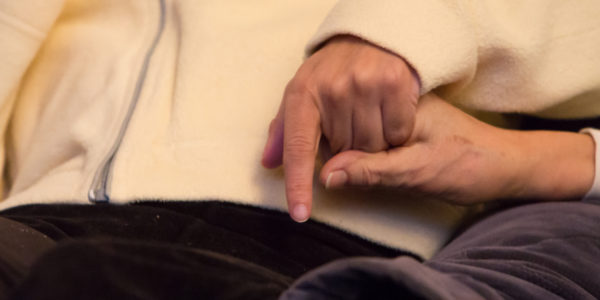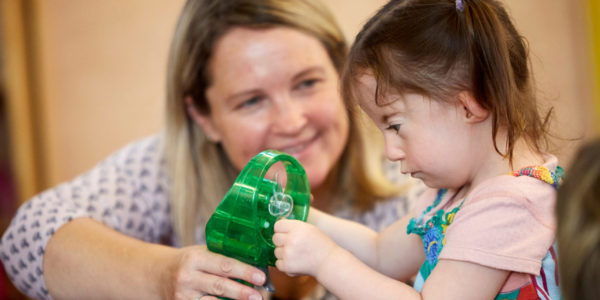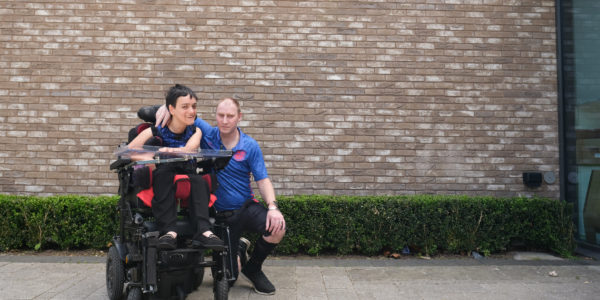How to apply for PIP: top tips for making an application
Zoe Bates runs the employment and benefits support service at Sense TouchBase Pears in Birmingham. In this blog, she explains how to apply for PIP (Personal Independence Payment), and everything you should know before you start the process.

In my role as an employment and benefits adviser for disabled people, I often get asked how to claim PIP successfully.
I’ve supported lots of people with this all around the UK, so I know the process inside out. As a visually impaired person, I’ve also been through it myself.
On this page are the top tips I always give to people who are thinking about making a PIP claim, and don’t know what to expect.
Applying for PIP is a long process. Remember to take care of yourself, and get support from family and friends throughout your application. I found some of the questions very personal. Answering these questions about your condition or disability can be demoralising.
If you’d like more support, you can always get in touch with our information and advice service, too.
How to get a PIP form
Once you’ve been officially diagnosed with a long-term health condition or a disability, you can apply for PIP. It starts with a phone call.
Call to start your PIP claim
To get a PIP form, you first need to call the Department for Work and Pensions (DWP).
It should be you that makes the call. If you’re non-verbal, or there’s another reason why you can’t make the call, you can ask someone to do it for you. You might ask a carer, support worker or family member. They’ll need to tell the person on the phone that they are calling on your behalf.
You’ll need to give some basic information like your name, address and contact details. They might ask for your date of birth and your National Insurance number.
Sometimes you’ll be asked what your disability or health condition is.
After you’ve called to start your PIP claim, your form will be sent to you. You can choose whether you get a paper form in the post (it usually takes about two weeks), or a link to an online form.
Call the PIP new claims phone line.
Find out more about working and claiming disability benefits.
Don’t be afraid to ask for more time
When you receive your form, it’ll say what date you need to return it by.
If you need extra support to help you fill out the form, don’t be afraid to ask for this deadline to be extended.
For example, if you have a visual impairment, you might need someone to help you write down your answers.
If this applies to you, call the PIP enquiry line to ask for more time, and explain why. They tend to give extensions of two to four weeks.
If they give you a new deadline, and you have a paper form, you should write that date on the front of your form.
You should also write to the DWP to confirm in writing that you were given an extension. Citizens Advice has a template letter you can use.
How to fill in your PIP form
The PIP claim form takes a long time to fill out. It’s titled “How your disability affects you”, and it is split into two sections: daily living and mobility.
You get points for each section, and the number of points decide whether you qualify for the “daily living component” and/or the “mobility component” of PIP.
There are about 50 questions to answer in total.
How to answer the questions on your PIP claim form
- Be honest. Don’t exaggerate anything, but also don’t downplay how much you struggle with things.
- Be consistent. For example, if you mention that you struggle to see print on cooking products, it’s important to mention that you also struggle to see print on toiletries. Remember, you will be asked the same questions again later, in your assessment, so honesty and consistency are key.
- Think carefully about your answers. For example, you might simply answer “yes” to a question like: “Can you eat a meal?” But if you really think about it, can you identify what all the things are on your plate? Do you need someone to tell you what you’re eating, or help you eat? Do you use special equipment when you’re eating? All of these things are important to mention.
- Don’t leave any room for interpretation in your answers. Be factual and give concrete examples. Instead of writing something like “most of the time”, give a specific figure, like “four days out of seven”.
Include as much evidence as possible
Send as much evidence as you can to support your PIP claim.
For example, you might include:
- Letters from doctors or healthcare providers.
- Prescriptions, and/or any evidence of treatments like physiotherapy.
- A yellow card or access card if you have one from your local council.
- Your certificate of visual impairment.
- Statements from family members, friends or carers.
- A diary showing how your condition affects you day-to-day.
Make sure to send photocopies of this evidence rather than the originals.
Get support to help you fill it out
Filling out this form can be difficult, because you need to make sure you’re giving all the information needed, without exaggerating or giving too much information.
If you don’t have any experience with the benefits system, I’d strongly recommend getting support to help fill out this form.
I offer support for disabled people applying for benefits here at Sense in Birmingham. You can also seek support from Scope, Citizens Advice, RNIB and other charities.
Keep a copy of your answers and a record of your postage
If you’ve filled out a paper form, make a photocopy of it before you send it. You will then have a copy for yourself, which you can refer back to before your assessment.
Post the completed form to the DWP using recorded delivery (prices start at a little over £2 for letters). This means you can track it, so you’ll have proof that it was sent and received.
Going to your PIP assessment
Once the DWP has your completed form, they’ll get in touch with you via email or text message. Make sure you check your junk folders.
They’ll book you in for an assessment. This will either happen over the phone, at your home or at a PIP assessment centre.
Be prepared to answer the same questions again
At your assessment, you’ll be asked more or less exactly the same questions that were on the PIP form. It will cover daily living and mobility.
Just be really truthful. You could also re-read your copy of your PIP claim form before your assessment, just to refresh your mind.
Remember you’re being observed
The assessor is not only looking at your answers, but at your behaviour and abilities on the day.
If you go to one of the PIP assessment centres, they may observe you via cameras from the moment you arrive on their premises.
During your assessment, your assessor might also ask you to read or sign things.
If they’re in your home, they may take notice of things they can see.
Ask for the assessment to be recorded
You can ask for your assessment to be recorded, and it’s important to do so.
This gives you evidence of exactly how the assessment went. If your claim is rejected, you can refer back to the recording.
The assessors might say that they’ll have to rebook your appointment if you need it to be recorded. Be as firm as you can on this.
Have somebody you trust with you
It’s really helpful to have someone with you to support you on the day. Just like filling out the PIP form, the process of answering these questions can be really difficult.
I had my mum with me during my assessment, and she was really helpful. She gave her thoughts for some of the questions. She also helped me to sign things and get around, and gave me emotional support.
How long does a PIP decision take?
Applying for PIP is a long process.
From the moment you first call the PIP new claims line, it can take anything from three to eight months.
After your assessment, there’s currently a wait of around 8 to 12 weeks for a decision.
If your claim is successful, your PIP may be backdated when you start receiving it. But you have to be prepared to wait for a long while.
What happens if your PIP claim is rejected
If you’re turned down, you’ll get a letter to say that your claim is not going through.
On the back of the letter there will be a form you can sign and send back, asking them to reconsider.
It will then be taken to another approval board. If they say no again, you have the right to appeal.
If you want to go for an appeal, it’s best to seek legal advice. Start by speaking to your local Citizens Advice or law centre.
Make sure you’re getting the benefits you’re entitled to
Navigating the benefits system can be difficult. We’ve got lots more information and advice to help you through.




